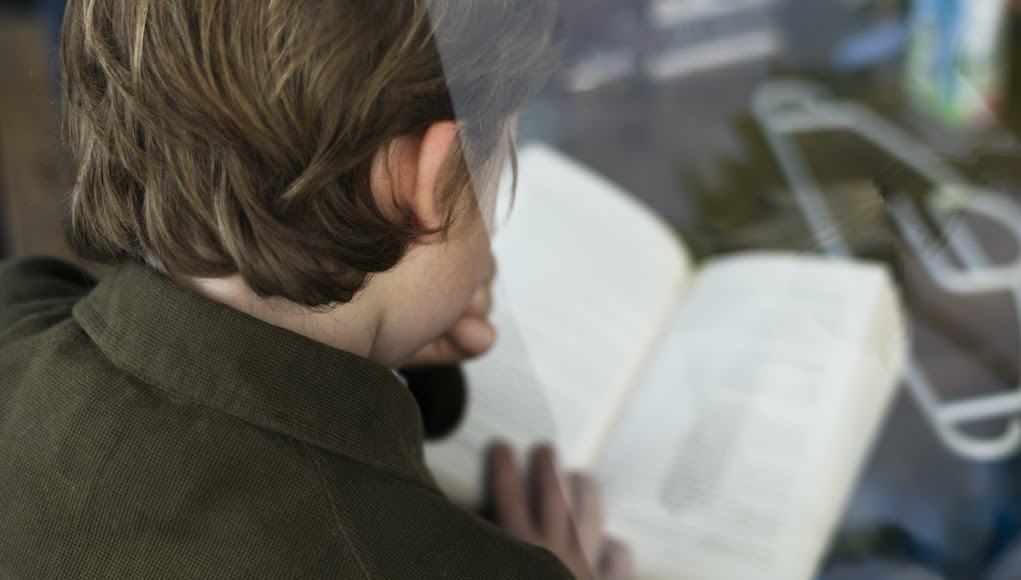2020 New Year’s Resolutions: Changes in Practice to Benefit the Whole Child

By: Kristen Thorson and Erin Gohl
As we mark the end of one year and the start of another, let us take a moment to reflect on the successes of the past months. Remember the ways you connected with students, used their interests and strengths to propel growth, and engaged with their families to extend learning beyond the classroom. Celebrate the lessons that sparked curiosity, the unplanned teachable moments, and the nurturing and collaborative learning space you created.
Let us also use the commencement of a new decade to challenge ourselves to continue to grow in our practice and approach. As we enter 2020, may we find big and little ways to make classrooms even more accepting, nurturing and dynamic environments where all students are able to flourish.
Alongside our personal commitments to go to the gym more often and practice self-care, let us resolve to reflect and consider whether some of our current classroom approaches are best practices for our students’ short- and long-term success. Here are some common practices you might reflect upon in the coming weeks.
Homework
The purpose of homework is to reinforce the learning that happens at school and to bridge the classroom with the home environment. These are good, noble intentions. Unfortunately, traditional homework all too often results in frustration rather than growth at home. As we have previously described in “Homework or No Homework? Maybe We’re Asking the Wrong Question,” when doing homework with children, parents often “feel uncertainty about how to best support their children as they complete their assignments. The parent/child relationship is reduced to one of enforcement rather than collaboration.” Research has shown very mixed results on the value of homework, especially in the elementary grades, with several studies finding no academic value and negative effects on family engagement. Additionally, any requirement that relies on home support, given the vast disparities across communities, inevitably results in inequities.
Try this. Instead of assigning traditional homework or worksheets, teachers might encourage students to dig further into their learning by providing guiding questions to promote conversation with their families. They might suggest, rather than require, experience-based learning that can best happen within the flexibility of a home environment. And when students need extra time to reinforce rote skills, teachers might offer encouragement to families to help with learning, along with an abundance of grace and understanding for evenings when homework does not go to plan or lacks the appropriate support to be functional.
Beyond the classroom, a district- or school-wide homework policy that is forgiving of different life situations and circumstances, both acute and chronic, creates a culture around home learning that is supportive and constructive rather than punitive and alienating.
Think innovatively. Seesaw, Class Dojo, and Remind apps all work to create channels of communication from school to home using the accessibility of mobile devices. These allow for more flexible and organic dialogue about student learning and ways to build upon that learning at home.
Reading Logs
In theory, reading logs make sense. They encourage at-home reading and aim to bridge school learning to the home. These are admirable goals. In practice, however, this is often not what happens. The families who are most likely to complete the reading logs are often the families who are already reading at home and do not require the added encouragement. Additionally, the daily or weekly pressure of signing the log (especially when consequences are tied to it for the student), adds a negative dimension to the at-home reading environment which can harm reading habits and relationships at home. At the elementary level, faulting the child for something that needs to be completed by the parent creates an unfair and inequitable dynamic in the classroom as the parents’ efforts are essentially being rewarded rather than the students’. For families that do need reminders to read at home, practices that shame or punish are not as effective as those that encourage and support.
Try this. While teachers should promote regular reading at home, finding ways to positively encourage and substantively support the quality of this reading is much more meaningful. Teachers might share strategies for reading at home and send aspirational and encouraging reminders without tying the practice to consequences at school. Using a communication app like Seesaw or Remind or standard email, teachers might share tips or model with short videos or images to convey best practices and highlight current classroom learning targets.
Children who fall in love with reading are most likely to be strong readers. Teachers should approach at-home reading with joy and enthusiasm. They might invite students to share something interesting they are reading about at home during a sharing circle. They could send a weekly list of fun places to read and check in with students about which ones they have tried. These approaches make reading exciting and fun and will likely result in more minutes read at home than the traditional log.
Think innovatively. Finding fun and interesting ways for children to share what they are reading about creates natural motivation to read more. You might have families take a picture of the student reading in an interesting spot. Consider creating a class or school FlipGrid page and encourage students to make videos reviewing their favorite book.
Behavioral Charts
Behavioral charts, publicly sharing a name on the board of a student who has broken a rule, and other public ways of monitoring behavioral progress and status do often affect student behavior in classrooms. But, the motivation for appropriate behavior and performance using these tools is often fear and shame rather than an understanding and desire to do the right thing. Even for the most compliant kids, these tracking systems can create unnecessary stress and anxiety. These children strive for a level of perfection that is not conducive to an environment based on learning, growth and socialization.
Try this. Establishing clear expectations with your class goes a long way in creating a mutually supportive learning environment. When those expectations are not met, there is sometimes a need for follow-up that allows the student to reflect and remedy the situation. Some students do require frequent check-ins with a teacher or visual cues as feedback on how they are doing. For these students, creating a system that is personal and discreet works best as the focus is on changing the behavior rather than the public response to the behavior.
Teachers can be proactive by creating a culture that emphasizes mindfulness, regular self check-ins and opportunities to process to meet students’ needs. Building even a few minutes of deep breathing or self-reflection into the regular school day, teaching children vocabulary words that define how they might feel, and giving them strategies (and opportunities to use these strategies) to address those feelings, shifts the classroom focus to self-awareness and self-management of emotions and feelings. These strategies empower students to take ownership of their feelings and reactions and can be utilized beyond a unique classroom in a way that classroom-specific behavioral charts and systems cannot.
Think innovatively. There is emerging evidence that structured reflective practice leads to decreased misbehavior. The free Inner Explorer app provides short videos for teachers to use daily in their classrooms. The videos walk the class through simple guided meditations that reinforce social-emotional learning and growth.
Testing Culture
The purpose of testing is to provide an objective measure of student learning and progress and to inform practice in order to encourage growth and development. Tests are supposed to be a tool to support the learning cycle. With the introduction of high-stakes consequences for teachers and schools for these test results, the tests have unfortunately become the end goal rather than an indicator to inform better practice. When test scores are prioritized in a classroom, many students feel anxiety and stress around learning, which inhibits growth. When product over process is emphasized, deeper learning and critical thinking are sometimes neglected. This narrow view of success shuts down a flourishing classroom culture as only a very limited range of skills are rewarded.
Try this. Make the shift to focus on process and learning over product and outcome. Research on growth mindset tells us that experiences with failure lead to a deeper understanding of concepts. Teachers can provide opportunities for consequence-free struggle and repeated attempts. They might reward effort alongside second, third, and fourth attempts.
When talking with families about student growth and progress, teachers can model and reinforce this holistic approach. They can talk about assessments as one piece of a much larger puzzle, sharing qualitative feedback, giving indications of social-emotional growth, and providing samples of what students do in the classroom.
Think innovatively. Student portfolios are an effective way to both produce a longitudinal view of student growth. These artifacts provide a much richer record of student learning than test scores or letter grades. Consider having students create a portfolio of their work. Online tools like Portfolium allow students to create and share a curated digital portfolio of student learning artifacts and projects.
2020: The Year For Clear Vision and Insights
Teachers want their students to grow and succeed. They want their time and energy to be spent on worthwhile, productive endeavors. All of these efforts are well-intentioned. Unfortunately, some very common practices, though at times momentarily effective, are not beneficial and are sometimes negatively consequential in the long run.
To ensure that teaching practices are in line with how students develop and support whole-child thinking, we must courageously try new things in the classroom and encourage our colleagues to do the same. Administrators and other school leaders must facilitate learning that allows teachers the space to dig into the research on what is truly best for students. They must create opportunities that allow teachers to take risks in changing their practice—without judgment—as they work to learn what is best for each student, their families, and the class as a whole. Let all educators resolve in the new year to reflect, reconsider, and reimagine the best learning environment for their students.
For more, see:
- 12 Tools to Try in the New Year
- Providing for Different Learning Styles
- Playing With Purpose: Using Games to Enrich Learning & Engage Students
Stay in-the-know with innovations in learning by signing up for the weekly Smart Update.







0 Comments
Leave a Comment
Your email address will not be published. All fields are required.